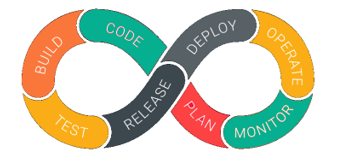Software testing has been the talk of the town for many reasons. From Artificial Intelligence (AI) to Machine Learning (ML), agile testing to devops testing it is continually evolving and even more advancing with the shifting technology landscape.
Enterprises across the world are leaning towards this growing trend to be ahead of their competitors. Given the new normal of living, the companies are investing heavily to build and nurture agile testing methods to deliver high-quality software applications and reduce the time-to-market. Speed and scale to deliver superior continuous quality will be the key factor in winning the digital battle.
Let’s look at top software testing trends that we believe will dominate in 2021 and beyond, read along –
AI and ML will rule the roost
There is no denying the fact that the implementation of AI and ML is not only helping the companies grow their revenues but is also helping them in designing tests from scratch without much human interference. Alternatively, they are assisting organizations in updating existing testing suites by eliminating redundant test cases.
Maveric’s Intelligent Quality Engineering (IQe) platform is one of the closest examples to this trend, which offers end-to-end domain-driven cognitive solutions for accelerating continuous quality pipeline.
By the year 2025, AI’s overall global investment is expected to reach almost USD 200 billion. We will expect to witness apps of AI in more testing zones — most of which will apply to analytics and reports.
Agile and DevOps will be on the rise
Even before the pandemic, organizations across the sectors were witnessing a huge change in customer experience. This factor can make or mar any business. To cope with these emerging trends, Agile and DevOps have been widely accepted solution which is looking at ways to shorten the software lifecycles from development to delivery and operation.
If Agile and DevOps strategy is rightly implemented, you can achieve countless benefits that one can think of. For instance, faster time to market, strong collaboration between the teams, continuous release and deployment, testing, monitoring, and easy defect detection.
According to Forrester Research “, 50% of organizations surveyed said they are implementing DevOps and are increasingly focused on how their organizations can successfully accelerate the delivery of applications and services — without additional headcount.”
“Those organizations that are enjoying its benefits have reported 60% higher revenue and profit growth than others. Moreover, the companies were 2.4 times more likely than the rest of the organizations surveyed to grow their businesses at a rate of over 20%”.
Codeless Test Automation
Codeless Test Automation is based on AI technology and visual modeling that allows creating test cases that cater to automation testing. Earlier when not many tools were available, ‘Record and Playback’ and Codeless testing were used interchangeably. But that’s not the case now. Now many automated testing tools in the market offer codeless testing in the true sense.
Some of the benefits like low learning curve, ease of use, simple to review, cost-effective, effortless integration of bug tracking and test management tools, and easily maintainable and manageable for complex tests, etc. This way, codeless testing becomes a preferred choice. Codeless test automation will have a big role to play in 2021 and beyond.
The shining fashion of Internet of things (IoT)
No one needs an introduction to IoT, it has become a regular part of our life. The evolution of 5G and other emerging networking technologies, will further boost the growth of IoT. As per a Gartner report, there could be more than 20 times as many smart devices at the edge of the network as in the conventional IT roles.
However, it is also projected that the emergence of 5G will open the gates for many new gadgets in the marketplace. Thus, it will require testing between protocols, devices, platforms, and OS’s. In turn, it will raise the demand for performance, security, compatibility, usability, and data integrity testing. So, the organization that is well prepared with IoT testing strategy will be able to bridge this gap.
Big Data Testing will be a must
The way in which the number of data processing devices is increasing every year, the processing of large data sets also increases every year. These ever-increasing and never-ending volumes of data have trigged the motivation behind the origin of Big Data Testing.
Irrespective of the size, organizations across industries rely heavily on structures and unstructured data. That’s why the quality of data is important as organization decisions are based on these data. Additionally, functional testing and performance testing do play its equal role in big-data testing.
As per Research and Markets survey 2020 report, the global market for Big Data estimated at US$70.5 Billion in the year 2020, is projected to reach a revised size of US$243.4 Billion by 2027, growing at a CAGR of 19.4% over the analysis period 2020-2027.
Mobile Test Automation on the go
According to the International Data Corporation (IDC) Worldwide Quarterly Mobile Phone Tracker, smartphone shipments are forecasted to grow by 4.4% in 2021.
The market rebound will be fueled by an impressively quick supply chain recovery as well as significant incentives from both OEMs and channels on new 5G products. IDC expects the global market to grow each year through 2024 with a five-year compound annual growth rate (CAGR) of 1.3%.
This rise in mobile penetration has created endless opportunities for the mobile app development market. It is expected to generate a market value of $14 billion by 2023 growing at a CAGR of 22% during the period 2018-2023. This reflects the enormous demand for mobile application testing, and the rising complexities which it has to deal with across a wide array of scenarios. Beyond testing, organizations would also look to invest in continuous improvement strategies in evaluating, benchmarking, and assessing their mobile apps against their toughest industry peer’s for their future sustainability.
QAOps to take a leap
There is no denying the fact that at the pace at which the digital world is evolving, the need for engineering software applications quality is taking the front seat. Earlier the role of the testing team was confined to application testing only but now the role of QA has also taken a leap. QA has started to play an important role across all phases of the Software Development Life Cycle (SDLC).

Just like DevOps make sure that software meets the desired quality standard, ensures smooth development and deployment process, ensures the right balance of security and operational needs, and therefore bridges the relationship between business operationalists and developers. On the other hand, QA brings operations, testers, and developers altogether. The role of RPA led testing will have an instrumental role to play in QAOps for speeding up the overall testing approach.
In a nutshell, the testing, development, and operation teams can work together and jointly release software through Continuous Integration (CI) and Continuous Delivery (CD) for Continuous Quality (CQ)
API Testing one step closer to digitalization
Today micro or API services have taken the front seat. It’s pushing organizations to integrate their application or services to 3rd party apps that end users are comfortable in using. API testing is one of the areas where automated testing is highly recommended because API automation can bridge the gap between the old and new testing technologies. With the enhancement of these microservices, the usage of API is increasing day by day.
By adding API testing to your QE processes, you can improve the quality, security, performance, and stability of the software and increase the speed to market. Maveric’s IQe API testing solution SNAPI, offers end-to-end integrated contextual testing solution across the entire API lifecycle. SNAPI examines various independent stages of API build such as design, data, execution, and performance. Open API’s will lead the game of digitization and this assures that there will be a significant rise in API testing in the years to come.
Performance Testing to shift towards Performance Engineering
Product performance has always been the top priority among organizations. The major factor that ensures the smooth performance of the product lies beneath performance testing.
Performance engineering allows QA/QE teams to move precedent running checkbox testing scripts to examining every single section of the application which in turn impacts the overall performance of any application. So, to avoid any kind of crash that can cause huge losses, the DevOps teams should regularly test applications as per the performance engineering process to confirm if there is a need for additional integration, stability, and quality.
Final Thoughts
These are the emerging trends in the software testing industry for 2021 and beyond. Organizations should gear up for these upcoming developments because keeping up with these trends would give testers, organizations, and teams to be ahead of the curve and at the same time deliver better products.































